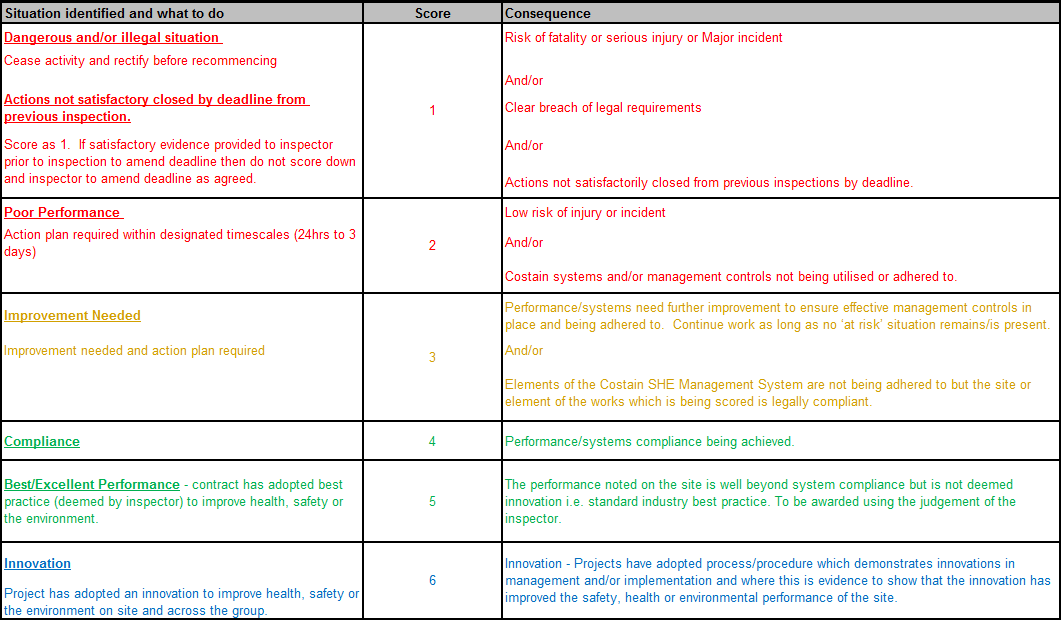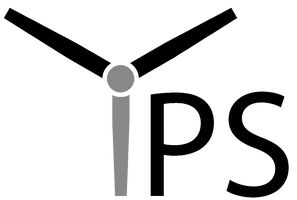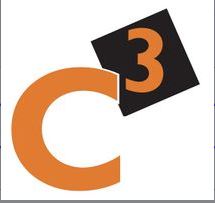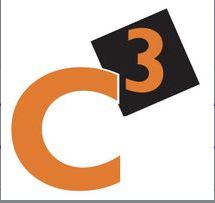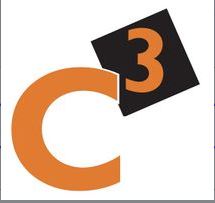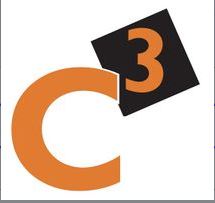Title Page
-
Site
-
Conducted on
-
Lead Inspectors Name
-
Accompanied By (Contract Rep)
-
Second Inspector/Director (if applicable)
-
Third Inspector/Director (if applicable)
-
Location
Details
-
Rail Sector
-
Framework
-
Scope of Inspection/Comments
-
Show Guidance - Scoring
-
-
INSTRUCTIONS
1. Please provide the score for the items below.
2. To add a Corrective Action click on the paperclip icon then "Add Action," provide a description, assign to a member, set priority, and due date.
3. Complete audit by providing digital signature.
4. Share your report by exporting as PDF, Word, Excel or Web Link.
SHE Leadership
-
1.a Actions from previous Scored Inspection closed out on time and in full (including all reds closed within 24 hrs)
- 1
- 2
- 3
- 4
- 5
- 6
-
1.b HASEMP - Established, up to date and reviewed
- 1
- 2
- 3
- 4
- 5
- 6
-
1.c HASEMP - Communicated
- 1
- 2
- 3
- 4
- 5
- 6
-
1.d Monthly Management Review undertaken including completion of Targeted Risk Monitoring Planner
- 1
- 2
- 3
- 4
- 5
- 6
-
1.e Consultation Forums taking place
- 1
- 2
- 3
- 4
- 5
- 6
-
1.f Appropriate resources and specialists identified (where applicable sourced to assist in the management of identified hazards and risks).
- 1
- 2
- 3
- 4
- 5
- 6
SHE Inspections and Reporting
-
2.a SHE Accident/Incident Reports and required monthly data completed, actions closed where relevant and entered on Capture
- 1
- 2
- 3
- 4
- 5
- 6
-
2.b SHE Hazards and Observations identified, correctly reviewed and managed
- 1
- 2
- 3
- 4
- 5
- 6
-
2.c Subcontractors Inspections completed effectively & actions closed
- 1
- 2
- 3
- 4
- 5
- 6
-
2.d Are Targeted Risk Monitoring Questions sets being carried out relevant to Top Five Risks and work activities
- 1
- 2
- 3
- 4
- 5
- 6
-
2.e Are Actions from Targeted Risk Monitoring being collated and measured on the Action Log
- 1
- 2
- 3
- 4
- 5
- 6
-
2.f External (to the Contract) Senior Manager Inspections completed & closed
- 1
- 2
- 3
- 4
- 5
- 6
SHE Communication
-
3.a Safe Start Site Presentation Do's and Dont's followed
- 1
- 2
- 3
- 4
- 5
- 6
-
3.b Inductions completed in accordance with How To SHE-H-702
- 1
- 2
- 3
- 4
- 5
- 6
-
3.c Start of Shift Briefing completed in accordance with How To SHE-H-702
- 1
- 2
- 3
- 4
- 5
- 6
-
3.d Relevant briefings, inductions and management briefings cover the breadth of hazards identified on site
- 1
- 2
- 3
- 4
- 5
- 6
-
3.e Evidence of Workforce Feedback Procedure
- 1
- 2
- 3
- 4
- 5
- 6
-
3.f Appropriate SHE communications briefed & implemented to relevant personnel
- 1
- 2
- 3
- 4
- 5
- 6
-
3.g Non-English speaking workers catered for appropriately
- 1
- 2
- 3
- 4
- 5
- 6
Competence and Training
-
4.a Costain Competency Card Policy implemented
- 1
- 2
- 3
- 4
- 5
- 6
-
4.b Costain Operational Managers competent for roles
- 1
- 2
- 3
- 4
- 5
- 6
-
4.c Subcontractor Operational Management competent for roles
- 1
- 2
- 3
- 4
- 5
- 6
-
4.d Operatives competent for roles
- 1
- 2
- 3
- 4
- 5
- 6
-
4.e Subcontractor competence assessed in accordance with Supply Chain requirements
- 1
- 2
- 3
- 4
- 5
- 6
-
4.f Subcontractor review completed as required and with relevant personnel
- 1
- 2
- 3
- 4
- 5
- 6
Supervision
-
5.a Supervisors briefed on Safe Start
- 1
- 2
- 3
- 4
- 5
- 6
-
5.b Compliance with front line Supervisor Blue Hat Protocol and associated assessment
- 1
- 2
- 3
- 4
- 5
- 6
-
5.c Supervisors visual at the work place
- 1
- 2
- 3
- 4
- 5
- 6
-
5.d Ratio of supervisors to operatives adequate
- 1
- 2
- 3
- 4
- 5
- 6
-
5.e Supervision effective
- 1
- 2
- 3
- 4
- 5
- 6
Risk Management
-
6.a RAMS Register in place and up to date
- 1
- 2
- 3
- 4
- 5
- 6
-
6.b RAMS approval process in line with How To SHE-H-433
- 1
- 2
- 3
- 4
- 5
- 6
-
6.c Are RAMS in place and adequate?
- 1
- 2
- 3
- 4
- 5
- 6
-
6.d Hierarchy of controls demonstrated within the RAMS
- 1
- 2
- 3
- 4
- 5
- 6
-
6.e RAMS Briefed in accordance with How To SHE-H-702
- 1
- 2
- 3
- 4
- 5
- 6
-
6.f RAMS implemented on site
- 1
- 2
- 3
- 4
- 5
- 6
-
6.g Have RAMS taken into account any changes to the original planned method and/or design?
- 1
- 2
- 3
- 4
- 5
- 6
Site Arrangements
-
7.a Site accommodation meets Costain Standard
- 1
- 2
- 3
- 4
- 5
- 6
-
7.b Facilities adequate including good housekeeping
- 1
- 2
- 3
- 4
- 5
- 6
-
7.c Regime in place to ensure standards are maintained
- 1
- 2
- 3
- 4
- 5
- 6
-
7.d Site perimeter established and security measures in place
- 1
- 2
- 3
- 4
- 5
- 6
-
7.e Appropriate segregation between public and site work in place
- 1
- 2
- 3
- 4
- 5
- 6
-
7.f Appropriate arrangements for the use of mobile devices established & in use
- 1
- 2
- 3
- 4
- 5
- 6
Emergency Arrangements
-
8.a SHE Incident Response Plan adequate & communicated
- 1
- 2
- 3
- 4
- 5
- 6
-
8.b Fire checklist and fire risk assessment completed & identified precautions implemented
- 1
- 2
- 3
- 4
- 5
- 6
-
8.c Fire protection suitable including signage, extinguishers, exits etc.
- 1
- 2
- 3
- 4
- 5
- 6
-
8.d Spill Kits in place and locations clear and communicated
- 1
- 2
- 3
- 4
- 5
- 6
-
8.e Weekly/Monthly Fire Checks completed
- 1
- 2
- 3
- 4
- 5
- 6
-
8.f Incident response precautions tested where necessary
- 1
- 2
- 3
- 4
- 5
- 6
First Aid
-
9.a Adequate first aid cover for personnel numbers & task activities
- 1
- 2
- 3
- 4
- 5
- 6
-
9.b Necessary signage including photos of First Aiders
- 1
- 2
- 3
- 4
- 5
- 6
-
9.c First Aid Equipment in place, adequate and valid
- 1
- 2
- 3
- 4
- 5
- 6
-
9.d Defibrillator in place and maintained
- 1
- 2
- 3
- 4
- 5
- 6
-
9.e First Aiders competent for role
- 1
- 2
- 3
- 4
- 5
- 6
-
9.f Accident Book available
- 1
- 2
- 3
- 4
- 5
- 6
Health & Wellbeing
-
10.a Health Champion appointed
- 1
- 2
- 3
- 4
- 5
- 6
-
10.b Group Health & Wellbeing Campaigns/Communications implemented
- 1
- 2
- 3
- 4
- 5
- 6
-
10.c D&A Testing completed at induction & equipment fit for purpose
- 1
- 2
- 3
- 4
- 5
- 6
-
10.d Safety Critical workers identified & medicals completed
- 1
- 2
- 3
- 4
- 5
- 6
-
10.e Hazard Specific medicals completed & persons monitored (Asbestos, Lead, HAVS, Noise, Ionising Radiation, Skin assessments etc.)
- 1
- 2
- 3
- 4
- 5
- 6
-
10.f If exposure to Asbestos, Lead, Radiation, Legionella or Weil's Disease, do operatives understand health risks & control measures?
- 1
- 2
- 3
- 4
- 5
- 6
Material and Waste Management
-
11.a Site Waste Management Plan completed and up to date
- 1
- 2
- 3
- 4
- 5
- 6
-
11.b Carriers & Waste management licenses/permits in place and checked
- 1
- 2
- 3
- 4
- 5
- 6
-
11.c Waste Transfer Notes (including Hazardous Consignment notes) in place and completed correctly
- 1
- 2
- 3
- 4
- 5
- 6
-
11.d Necessary permits and/or exemptions in place for all works
- 1
- 2
- 3
- 4
- 5
- 6
-
11.e Material & Waste minimisation measures implemented
- 1
- 2
- 3
- 4
- 5
- 6
-
11.f Imported recycled material correct & monitored
- 1
- 2
- 3
- 4
- 5
- 6
-
11.g Waste removed from site recorded monthly via Capture
- 1
- 2
- 3
- 4
- 5
- 6
Resource Efficiency
-
12.a Resource Efficiency Champion appointed
- 1
- 2
- 3
- 4
- 5
- 6
-
12.b Resource efficiency measures planned for (within HASEMP)
- 1
- 2
- 3
- 4
- 5
- 6
-
12.c Measures/actions from plan implemented on site to reduce energy usage & increase energy efficiency
- 1
- 2
- 3
- 4
- 5
- 6
-
12.d All required utility meters set up on Capture, read and reported monthly
- 1
- 2
- 3
- 4
- 5
- 6
Behavioural Management
-
13.a CBS Champion Appointed
- 1
- 2
- 3
- 4
- 5
- 6
-
13.b CBS Implementation Plan in place and being used
- 1
- 2
- 3
- 4
- 5
- 6
-
13.c CBS and Hazard Ratios are being used
- 1
- 2
- 3
- 4
- 5
- 6
-
13.d Site using Hazard data to predict at risk behaviours and taking proactive actions to mitigate them
- 1
- 2
- 3
- 4
- 5
- 6
-
13.e Behavioural Improvement Plans (BIPs) and CBS Tools being used
- 1
- 2
- 3
- 4
- 5
- 6
Storage and Housekeeping
-
14.a General storage areas clean, tidy and well demarcated
- 1
- 2
- 3
- 4
- 5
- 6
-
14.b Site and public roads cleaned and maintained
- 1
- 2
- 3
- 4
- 5
- 6
-
14.c Management of leakages or spills in place
- 1
- 2
- 3
- 4
- 5
- 6
-
14.d Any slip, trip & fall hazards
- 1
- 2
- 3
- 4
- 5
- 6
-
14.e Access & egress of all areas (including offices) suitable
- 1
- 2
- 3
- 4
- 5
- 6
Storage of Hazardous Substances
-
15.a Adequate facilities for the storage of bulk hazardous materials
- 1
- 2
- 3
- 4
- 5
- 6
-
15.b Adequate facilities for the storage of small container hazardous materials
- 1
- 2
- 3
- 4
- 5
- 6
-
15.c Adequate dispensing facilities in place
- 1
- 2
- 3
- 4
- 5
- 6
-
15.d Drains and interceptors maintained
- 1
- 2
- 3
- 4
- 5
- 6
-
15.e Hazardous waste segregated
- 1
- 2
- 3
- 4
- 5
- 6
Substance Management Inc. COSHH, Dust etc.
-
16.a Substance assessments & register completed
- 1
- 2
- 3
- 4
- 5
- 6
-
16.b Risk, hazards & controls communicated adequately
- 1
- 2
- 3
- 4
- 5
- 6
-
16.c Users/Operatives understand hazards, risks and control measures
- 1
- 2
- 3
- 4
- 5
- 6
-
16.d Implemented control measures adequate
- 1
- 2
- 3
- 4
- 5
- 6
-
16.e Dust monitoring completed where applicable & action taken
- 1
- 2
- 3
- 4
- 5
- 6
-
16.f Face fit testing completed, actioned & recorded, if applicable
- 1
- 2
- 3
- 4
- 5
- 6
Personal Protective Equipment
-
17.a Corporate and Site Standards (including all mandatory items)
- 1
- 2
- 3
- 4
- 5
- 6
-
17.b PPE issued & recorded
- 1
- 2
- 3
- 4
- 5
- 6
-
17.c General condition adequate and correctly used
- 1
- 2
- 3
- 4
- 5
- 6
-
17.d PPE specified within a risk assessment (sample) worn and correctly used
- 1
- 2
- 3
- 4
- 5
- 6
Occupied Accommodation (Temporary or Permanent)
-
18.a Office assessment completed e.g. DSE
- 1
- 2
- 3
- 4
- 5
- 6
-
18.b Where relevant (e.g. a COMAH site), has an occupied building risk assessment been completed and all actions closed out before occupation?
- 1
- 2
- 3
- 4
- 5
- 6
Permits - General Works
-
19.a Competent Permit Issuers identified and appointed
- 1
- 2
- 3
- 4
- 5
- 6
-
19.b Necessary hold points for permits included in RAMS
- 1
- 2
- 3
- 4
- 5
- 6
-
19.c Permit register up to date
- 1
- 2
- 3
- 4
- 5
- 6
-
19.d Issued, signed & closed correctly where relevant
- 1
- 2
- 3
- 4
- 5
- 6
-
19.e Communicated & understood
- 1
- 2
- 3
- 4
- 5
- 6
-
19.f Permit and necessary controls adhered to
- 1
- 2
- 3
- 4
- 5
- 6
-
19.g Environmental Consent Tracker in place and up to date
- 1
- 2
- 3
- 4
- 5
- 6
SHE in Design
-
20.a Overall Design Manager/Lead appointed
- 1
- 2
- 3
- 4
- 5
- 6
-
20.b Significant SHE Risk Log/Register in place & up to date
- 1
- 2
- 3
- 4
- 5
- 6
-
20.c If necessary, have specialist design teams been engaged where a hazard, risk or opportunity has been identified and needs to be managed by a specialist?
- 1
- 2
- 3
- 4
- 5
- 6
-
20.d SHE Design Risks communicated adequately
- 1
- 2
- 3
- 4
- 5
- 6
Temporary Works
-
21.a Competent TW Coordinator in place and appointed
- 1
- 2
- 3
- 4
- 5
- 6
-
21.b TW Design & Management planned for, including necessary hold points inserted into RAMS to accommodate TW inspection & permits
- 1
- 2
- 3
- 4
- 5
- 6
-
21.c RAMS documents with TW elements reviewed by the TWC (including design risk mitigation)
- 1
- 2
- 3
- 4
- 5
- 6
-
21.d Temporary Works Register in place, maintained and up to date
- 1
- 2
- 3
- 4
- 5
- 6
-
21.e Necessary Permits in place and inspections completed
- 1
- 2
- 3
- 4
- 5
- 6
Confined Spaces
-
22.a Activity properly planned including RAMS & Permits
- 1
- 2
- 3
- 4
- 5
- 6
-
22.b Appropriate equipment in place & adequately maintained
- 1
- 2
- 3
- 4
- 5
- 6
-
22.c Persons involved in activity competent
- 1
- 2
- 3
- 4
- 5
- 6
-
22.d Adequate Emergency plan in place & communicated
- 1
- 2
- 3
- 4
- 5
- 6
-
22.e Identified controls implemented
- 1
- 2
- 3
- 4
- 5
- 6
Excavations
-
23.a Activity properly planned, including service owners/operators contacted and RAMS & Permits issued
- 1
- 2
- 3
- 4
- 5
- 6
-
23.b Area surveyed, services identified via trial holes, marked on working drawings and on site
- 1
- 2
- 3
- 4
- 5
- 6
-
23.c People detecting & identifying services competent
- 1
- 2
- 3
- 4
- 5
- 6
-
23.d Access & egress suitable for excavation
- 1
- 2
- 3
- 4
- 5
- 6
-
23.e General soundness & protection (including edge/shoring)
- 1
- 2
- 3
- 4
- 5
- 6
-
23.f Excavated materials managed correctly, including contaminated land
- 1
- 2
- 3
- 4
- 5
- 6
-
23.g Dewatering/discharge requirements managed including necessary permits/consents in place
- 1
- 2
- 3
- 4
- 5
- 6
-
23.h Required inspections completed and recorded
- 1
- 2
- 3
- 4
- 5
- 6
Working at Height
-
24.a Principles of prevention applied and planned for, including RAMS
- 1
- 2
- 3
- 4
- 5
- 6
-
24.b Fall prevention controls adequate
- 1
- 2
- 3
- 4
- 5
- 6
-
24.c Equipment correctly used
- 1
- 2
- 3
- 4
- 5
- 6
-
24.d Access & egress adequate and used correctly
- 1
- 2
- 3
- 4
- 5
- 6
-
24.e Fall arrest equipment inspections etc. carried out and recorded
- 1
- 2
- 3
- 4
- 5
- 6
-
24.f Powered Access Equipment - inspected, maintained and in good working order
- 1
- 2
- 3
- 4
- 5
- 6
Scaffolds/Scaffold Towers
-
25.a Activity properly plannedm including RAMS
- 1
- 2
- 3
- 4
- 5
- 6
-
25.b Required fall protection measures in place (handrails, guarding, edge etc.)
- 1
- 2
- 3
- 4
- 5
- 6
-
25.c Access & egress adequate and used correctly
- 1
- 2
- 3
- 4
- 5
- 6
-
25.d Housekeeping adequate on scaffolds and scaffold towers
- 1
- 2
- 3
- 4
- 5
- 6
-
25.e Scaffold and scaffold towers correctly used
- 1
- 2
- 3
- 4
- 5
- 6
-
25.f Required inspections completed and recorded
- 1
- 2
- 3
- 4
- 5
- 6
Lifting - Equipment & Operations
-
26.a Activity properly planned, including RAMS & lift plans
- 1
- 2
- 3
- 4
- 5
- 6
-
26.b Activity adequate, coordinated and effectively communicated
- 1
- 2
- 3
- 4
- 5
- 6
-
26.c Staff competent for the duties required by the lift being undertaken
- 1
- 2
- 3
- 4
- 5
- 6
-
26.d Correct type of equipment and accessories used and in good order
- 1
- 2
- 3
- 4
- 5
- 6
-
26.e Storage of lifting accessories adequate
- 1
- 2
- 3
- 4
- 5
- 6
-
26.f Required inspections completed and recorded, including thorough examinations
- 1
- 2
- 3
- 4
- 5
- 6
Transport & Vehicle Logistics
-
27.a Deliveries and vehicle movements planned
- 1
- 2
- 3
- 4
- 5
- 6
-
27.b Vehicles meet necessary standards, including all round visibility and warning devices
- 1
- 2
- 3
- 4
- 5
- 6
-
27.c Effective Delivery Driver inductions undertaken
- 1
- 2
- 3
- 4
- 5
- 6
-
27.d Delivery vehicle movement controls adequate, including pedestrian separation and adhered to
- 1
- 2
- 3
- 4
- 5
- 6
-
27.e Staff competent for duties
- 1
- 2
- 3
- 4
- 5
- 6
-
27.f Equipment immobilised as required
- 1
- 2
- 3
- 4
- 5
- 6
Traffic Management
-
28.a Traffic Management Plan adequate for activities undertaken
- 1
- 2
- 3
- 4
- 5
- 6
-
28.b Traffic Management drawings adequate and implemented
- 1
- 2
- 3
- 4
- 5
- 6
-
28.c Staff competent for duties
- 1
- 2
- 3
- 4
- 5
- 6
-
28.d Necessary controls in place and in good order, including segregation, signage, lighting etc.
- 1
- 2
- 3
- 4
- 5
- 6
-
28.e Required inspections completed and recorded
- 1
- 2
- 3
- 4
- 5
- 6
Portable Tools
-
29.a Activities and areas planned for where portable tools are to be used
- 1
- 2
- 3
- 4
- 5
- 6
-
29.b Suitable work areas and associated controls implemented
- 1
- 2
- 3
- 4
- 5
- 6
-
29.c Tools suitable for task and correctly used (including power supply)
- 1
- 2
- 3
- 4
- 5
- 6
-
29.d Tools in good order
- 1
- 2
- 3
- 4
- 5
- 6
-
29.e Tool user competent
- 1
- 2
- 3
- 4
- 5
- 6
-
29.f Required inspections completed and recorded
- 1
- 2
- 3
- 4
- 5
- 6
Electrical
-
30.a Activities that may interface with electrical equipment planned for and necessary permits in place
- 1
- 2
- 3
- 4
- 5
- 6
-
30.b Plans include the identification of all working parties in area
- 1
- 2
- 3
- 4
- 5
- 6
-
30.c Controls effectively communicated and understood
- 1
- 2
- 3
- 4
- 5
- 6
-
30.d Those working with electricity or electrical equipment competent
- 1
- 2
- 3
- 4
- 5
- 6
-
30.e Controls adequate and in place
- 1
- 2
- 3
- 4
- 5
- 6
-
30.f Electrical certifications and regime in place to ensure standards are maintained
- 1
- 2
- 3
- 4
- 5
- 6
-
30.g Electrical equipment in good order and to required voltage
- 1
- 2
- 3
- 4
- 5
- 6
-
30.h Required inspections completed and recorded, including Portable Appliance Testing
- 1
- 2
- 3
- 4
- 5
- 6
Plant & Machinery
-
31.a Plant and machinery meet Costain Standards
- 1
- 2
- 3
- 4
- 5
- 6
-
31.b Relevant staff competent
- 1
- 2
- 3
- 4
- 5
- 6
-
31.c Effective Plant Operators inductions undertaken
- 1
- 2
- 3
- 4
- 5
- 6
-
31.d Plant and machinery suitable for task and being correctly used
- 1
- 2
- 3
- 4
- 5
- 6
-
31.e Plant and machinery in good order
- 1
- 2
- 3
- 4
- 5
- 6
-
31.f Pollution prevention controls in place (including drip trays etc.)
- 1
- 2
- 3
- 4
- 5
- 6
-
31.g Required inspections completed and recorded
- 1
- 2
- 3
- 4
- 5
- 6
Manual Handling
-
32.a Manual Handling assessment completed
- 1
- 2
- 3
- 4
- 5
- 6
-
32.b Assessment communicated and understood
- 1
- 2
- 3
- 4
- 5
- 6
-
32.c Controls adequate and complied with
- 1
- 2
- 3
- 4
- 5
- 6
-
32.d Mechanisation utilised, where applicable
- 1
- 2
- 3
- 4
- 5
- 6
Occupational Noise & HAVS
-
33.a Occupational noise and HAVS assessments completed (SHE-T-292)
- 1
- 2
- 3
- 4
- 5
- 6
-
33.b Assessments communicated and understood
- 1
- 2
- 3
- 4
- 5
- 6
-
33.c HAVS induction undertaken, where applicable (SHE-T-249)
- 1
- 2
- 3
- 4
- 5
- 6
-
33.d Controls adequate and in place
- 1
- 2
- 3
- 4
- 5
- 6
-
33.e HAVS trigger times recorded and acted upon, if relevant
- 1
- 2
- 3
- 4
- 5
- 6
-
33.f Occupational noise monitored and acted upon, if relevant
- 1
- 2
- 3
- 4
- 5
- 6
-
33.g Mechanisation utilised to minimise exposure, where applicable
- 1
- 2
- 3
- 4
- 5
- 6
Environmental Noise & Vibration
-
34.a Mitigation plans in place for potential noise and vibration nuisances
- 1
- 2
- 3
- 4
- 5
- 6
-
34.b Controls communicated and understood
- 1
- 2
- 3
- 4
- 5
- 6
-
34.c Controls adequate and implemented
- 1
- 2
- 3
- 4
- 5
- 6
-
34.d Necessary permits/consents in place and adhered to
- 1
- 2
- 3
- 4
- 5
- 6
-
34.e Monitoring completed as required and acted upon, if relevant
- 1
- 2
- 3
- 4
- 5
- 6
Water Management
-
35.a Plans in place for management of surface and groundwater
- 1
- 2
- 3
- 4
- 5
- 6
-
35.b Controls communicated and understood
- 1
- 2
- 3
- 4
- 5
- 6
-
35.c Controls and protection adequate and implemented
- 1
- 2
- 3
- 4
- 5
- 6
-
35.d Necessary permits/consents in place and adhered to
- 1
- 2
- 3
- 4
- 5
- 6
-
35.e Monitoring completed as required and acted upon, if relevant
- 1
- 2
- 3
- 4
- 5
- 6
-
35.f Designated control wash out pit and disposal mechanism in place, if applicable
- 1
- 2
- 3
- 4
- 5
- 6
Ecology, Archaeology & Heritage
-
36.a Plans in place for management of ecology, archaeology and/or heritage
- 1
- 2
- 3
- 4
- 5
- 6
-
36.b Controls communicated and understood
- 1
- 2
- 3
- 4
- 5
- 6
-
36.c Controls and protections adequate and implemented
- 1
- 2
- 3
- 4
- 5
- 6
-
36.d Necessary permits/consents in place and adhered to
- 1
- 2
- 3
- 4
- 5
- 6
-
36.e Monitoring completed as required and acted upon, if relevant
- 1
- 2
- 3
- 4
- 5
- 6
Food Hygiene
-
37.a Catering facilities planned for, including RA
- 1
- 2
- 3
- 4
- 5
- 6
-
37.b Controls communicated and understood
- 1
- 2
- 3
- 4
- 5
- 6
-
37.c Kitchen hygiene adequate and maintained
- 1
- 2
- 3
- 4
- 5
- 6
-
37.d Staff workwear suitable, clean and serviceable
- 1
- 2
- 3
- 4
- 5
- 6
-
37.e Minimum food safety certificates available and displayed
- 1
- 2
- 3
- 4
- 5
- 6
-
37.f Dangerous equipment users competent
- 1
- 2
- 3
- 4
- 5
- 6
-
37.g Required inspections completed and recorded
- 1
- 2
- 3
- 4
- 5
- 6
Sleeping & Living Accommodation
-
38.a Sleeping/Living accommodation adequately planned for, including fire & emergency arrangements
- 1
- 2
- 3
- 4
- 5
- 6
-
38.b Controls communicated and understood
- 1
- 2
- 3
- 4
- 5
- 6
-
38.c Safe access and egress, including lighting
- 1
- 2
- 3
- 4
- 5
- 6
-
38.d Adequate space between vehicles, caravans and existing buildings provided
- 1
- 2
- 3
- 4
- 5
- 6
-
38.e Adequate distance between fuel storage provided
- 1
- 2
- 3
- 4
- 5
- 6
-
38.f Fire & emergency controls implemented and adequate
- 1
- 2
- 3
- 4
- 5
- 6
Sign off
-
Name and Signature of Inspector:






